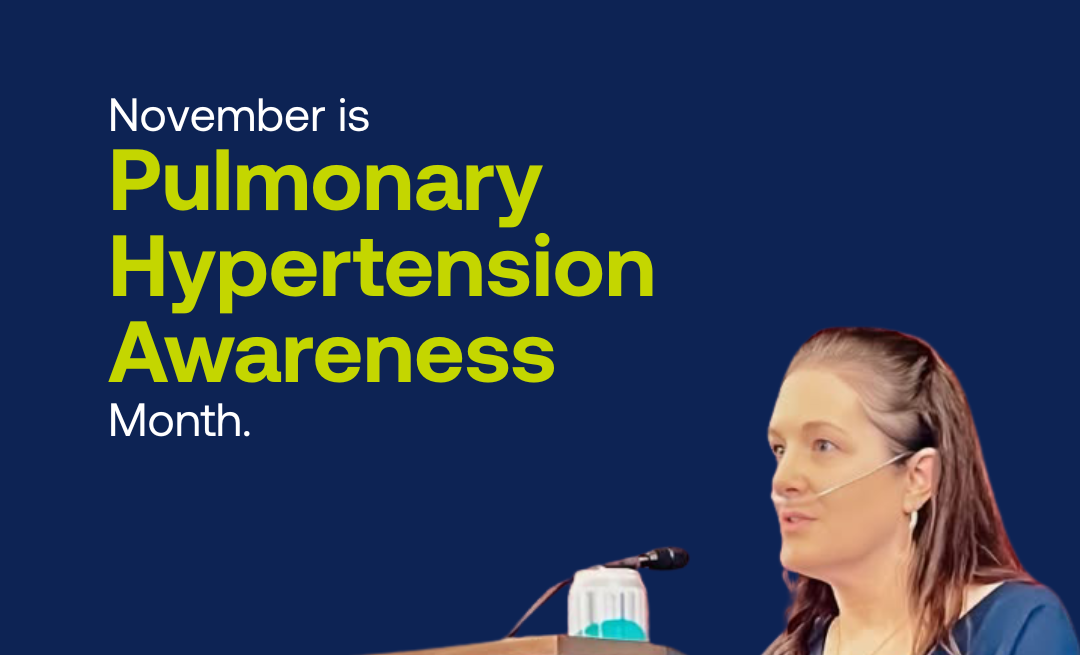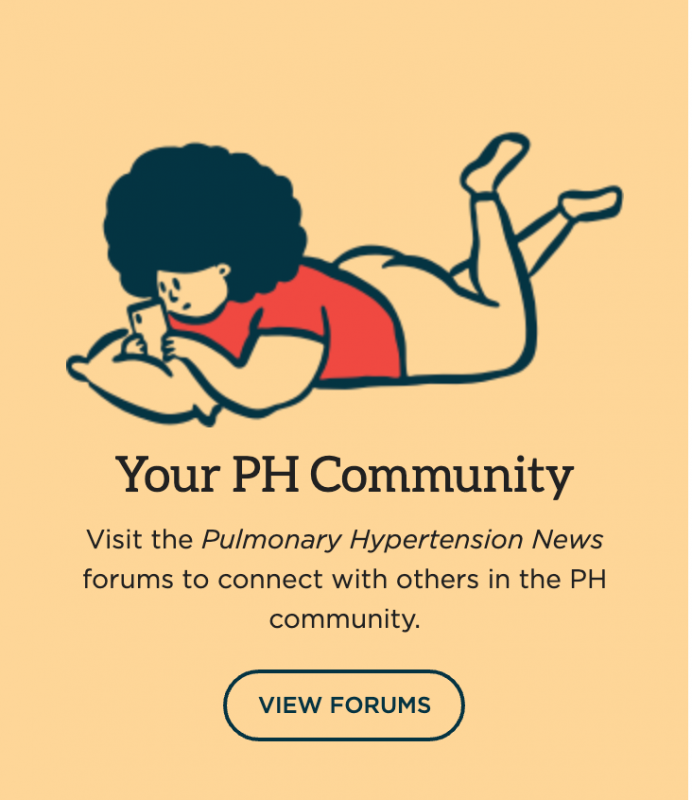My journey from liquid oxygen to E-tanks and then to Washington, D.C.

Colleen Conner is advocating on stage for coverage for the right type and amount of oxygen needed. (Courtesy of Colleen Conner)
This article is provided by our partner, the American Lung Association. It has been reviewed by Bionews for accuracy and relevance. The views and opinions expressed are those of the author and do not necessarily reflect the views of Bionews or Pulmonary Hypertension News.
How often do you think about breathing? For most people, it’s an unconscious process — until it isn’t. Every time I leave my home, I must first calculate how long I’ll be out and my planned activity level to determine how much supplemental oxygen I’ll need.
But there’s a cruel twist: I’m restricted by my monthly allocation of tanks, forcing impossible choices.
In 2004, post-pregnancy, I started exercising again, but when I tried to work out, I couldn’t breathe. This was strange since I have been an athlete for most of my life. I went to my doctor, who assumed I had exercise-induced asthma. I then went to see a pulmonologist and then a cardiologist, who insinuated my shortness of breath was due to anxiety from my busy life as a working mom of two young children. Finally, I urged him to give me an echocardiogram, which led to the diagnosis of primary pulmonary hypertension in 2007.
Soon after my diagnosis, I started using supplemental oxygen. My children were just 3 and 7 years old; however, thanks to my liquid oxygen system, I could stay active, independent, and care for them. I could leave the house for the day, take them to activities, and even enjoy simple moments like walking on the beach.
That freedom was taken from me in 2018 when my liquid oxygen system was no longer available due to changes in Medicare reimbursement policies.
Today, I rely on a heavy E-tank that weighs 16 pounds and requires a cart. My old liquid oxygen device weighed 5 pounds, fit into a backpack, and delivered the same amount of oxygen but allowed me to move freely. If I had been forced to use the E-tank when my children were young, I could not have easily left the house with them.
Now I’m limited because of the number of tanks my supplier will provide me, and I can only leave my home for 14 hours a week, carefully rationing time for necessities like groceries over moments with loved ones. My freedom and independence have largely been taken from me.
I am not alone in these challenges. Life can be incredibly challenging for the more than 1.5 million Americans living with severe lung diseases, such as pulmonary hypertension, chronic obstructive pulmonary disease (COPD), cystic fibrosis, severe asthma, pneumonia, sleep apnea, and other conditions, who require supplemental oxygen. I know this firsthand — I have been living on oxygen for 18 years while raising a family.
This change has been unacceptable, so I decided to take action. I have joined organizations like the Pulmonary Hypertension Association (PHA) and the American Lung Association (ALA) to advocate for people to have access to the right type and amounts of supplemental oxygen through the Supplemental Oxygen Access Reform (SOAR) Act (S. 1406/H.R. 2902). This bipartisan bill would restore access to liquid oxygen for those for whom it is medically necessary, provide access to a respiratory therapist, and establish a standardized template for oxygen prescriptions. Without reform, we will remain isolated, denied the freedom and independence we deserve.
Through PHA, I’ve had the opportunity to actively advocate for the SOAR Act — traveling to Washington, D.C., several times for congressional visits and briefings; speaking at national events such as the PHA International Conference, ATS 2024, and a Pulmonary Fibrosis Foundation session; and participating in PHA’s PH Insights Podcast.
Working closely with the PHA, I’ve also engaged in numerous virtual meetings with members of Congress, spoken at local walks and support groups, and worked to educate and engage physicians in supporting SOAR by organizing several hospital-based teams to advocate alongside their patients. I’ve also spoken with reporters, many of whom I was connected with through both PHA and the American Lung Association. The ALA also supported me in publishing a letter to the editor to raise awareness about oxygen reform.
Reliable oxygen access allowed me to raise a family and enjoy life. Losing that access has been devastating. This isn’t just about Medicare; it’s about everyone who depends on supplemental oxygen to live.
I urge readers to take action. The single most important thing you can do is call your members of Congress by looking up their names and numbers and asking them to “Please act to ensure that S. 1406/H.R. 2902, the Supplemental Oxygen Access Reform Act, becomes law this year.” It’s as simple as that. Alternatively, you can send a message.
Together we can make a difference and ensure that no one must choose between breathing and living.
Colleen Connor is a 56-year-old patient advocate and volunteer living with pulmonary arterial hypertension, as well as a breast cancer survivor, and a past member of the Board of Trustees of the Pulmonary Hypertension Association. Since her initial diagnosis in 2007, she has dedicated herself to helping and encouraging others with pulmonary hypertension to hope for a cure, and has engaged in numerous advocacy and fundraising activities to advance awareness and research. She is a member of the American Board of Internal Medicine’s Specialty Pulmonary Disease Board, representing patients.







